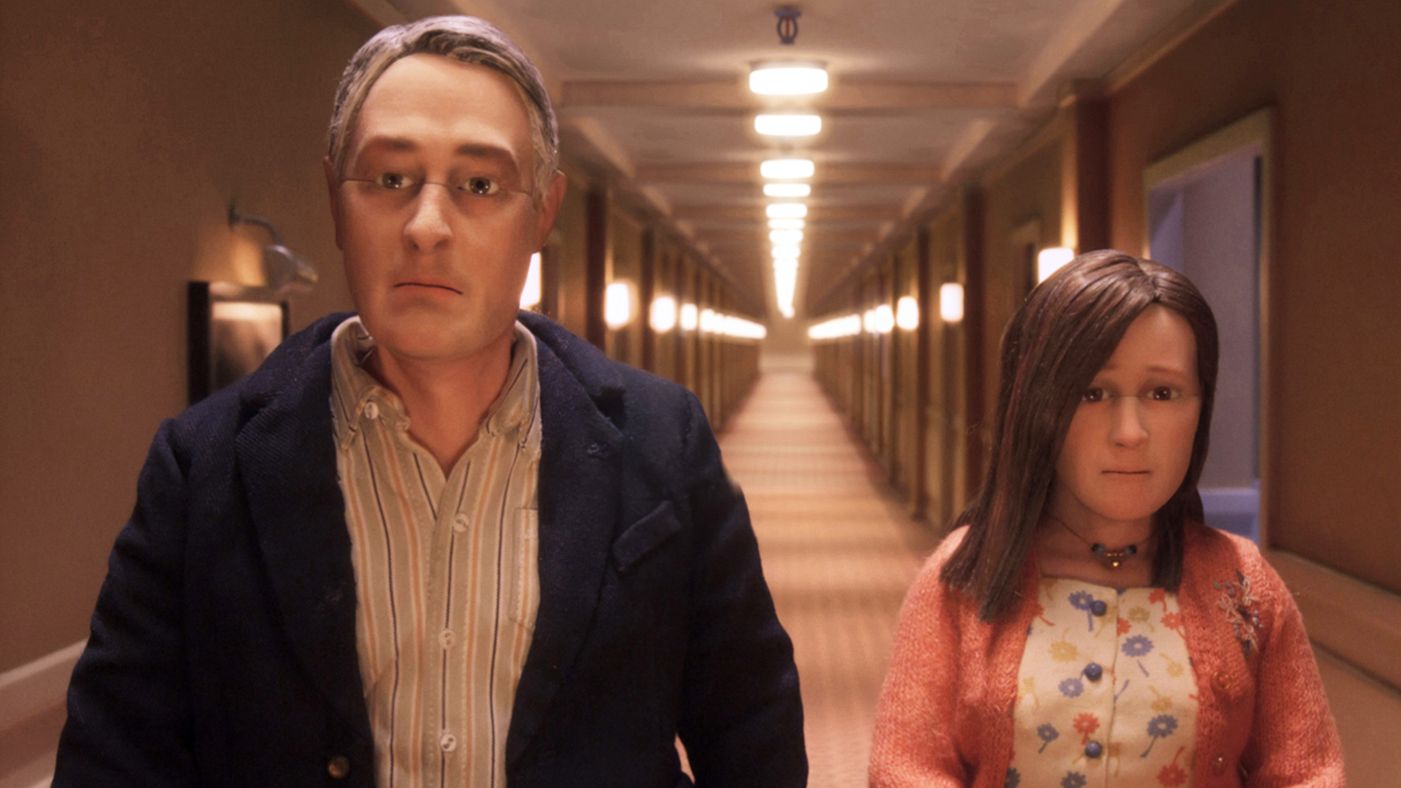This guest post written by Sarah Halle Corey previously appeared at REELYDOPE and is cross-posted with permission.
I watched Anomalisa in a room filled with middle-aged men. It was not a movie meant for me, and I knew that going in.
Charlie Kaufman, the writer and co-director of the film, is the king of emotionally damaged men in indie film, from lovesick Joel in Eternal Sunshine of the Spotless Mind to self-loathing (and semi-autobiographical) Charlie in Adaptation. He creates brooding, self-centered white men who struggle to find meaning in their existences. Michael, the main character of Anomalisa, is no different. He’s a self-help author who doesn’t know how to help himself. Everyone in his world looks and sounds exactly the same, and so he doesn’t know how to connect to other people or to any sense of meaning in his life. He’s trapped by his own weaknesses, especially his own depression and disillusionment. And he’s a middle-aged white man.
The middle-aged men in my movie theater audience ate it all up.
But the thing is, I did too… at least a little. If I didn’t fully eat it up, I took some pretty hefty bites. I, a 22-year-old woman with a big, bubbly smile relate to Anomalisa. What does that say about me? What does it say about the movie?
Roger Ebert famously said, “The movies are like a machine that generates empathy.” Kaufman and co-director Duke Johnson pretty brilliantly demonstrate Ebert’s idea by fully immersing the audience in Michael’s world. We see the same identically blank faces as Michael, and we hear the same single one-tone voice. The drab colors and claustrophobic hotel setting contribute to Michael’s and the audience’s sense that the world is a mind-numbing place. Oh, and did I mention the whole thing is made with stop-motion animation? So each and every movement on screen is slightly stilted, slightly inhuman. The use of stop-motion to create a sense of detachment is the cherry on top of a disillusionment sundae.
The audience is so expertly placed in Michael’s perspective, that we can’t help but feel the fear and tedium and longing that he does. As we watch the movie, we tap into something in ourselves; our own personal feelings rise up and help us to relate to the story being told. Beneath the surface of my bubbly smile, there is some fear and some longing, and maybe even a little tedium every now and then. Kaufman helps us to dig into what might be happening beyond the surface of reality. He draws on an emotional darkness that is deeply human – something that every person can relate to in some way, big or small, regardless of gender or age.
Which is why it’s frustrating to see in Anomalisa – like in so many movies before it – the sense of hope come in the form of a woman, an object of romance for a man. Michael, and thus the audience, feel disillusioned until Lisa enters the story. With a detailed face and a unique voice crackling with warmth, Lisa offers a beacon of connection and possible peace of mind. She is in the movie to serve only one purpose: to be Michael’s vision of salvation who he hopes will save him.
We’ve seen it countless times before with the Manic Pixie Dream Girl: the cinematic trope of quirky women who are endlessly available to better the lives of male leads. Lisa doesn’t exactly fit the type; while the Manic Pixie Dream Girl stands out as eccentric, Lisa is completely and utterly ordinary. And, (spoiler alert) Michael’s hopes for salvation through her don’t come to fruition. Nevertheless, even as the antithetical Manic Pixie Dream Girl, Lisa’s only role in the film is to be a projection of Michael’s emotions and issues.
As I sat watching Anomalisa, which had expertly wrapped me up in Michael’s world, I couldn’t help thinking where his fixation on Lisa left me as an audience member. I was there for the ride, there to be swept up into my main character’s point of view. And yet, his point of view is the male gaze, of which I, as a young woman, would theoretically be the object. So then what is my place in watching Anomalisa?
To put it bluntly, I’m sick of movies in which sad men think they can be saved by their idea of a woman. Existential dread and emotional depth belong to us all, not just middle-aged men. Perhaps the male gaze in film is something that women can claim for ourselves, reminding the world that these feelings are universal ones. When we’re not fighting the patriarchy, women also get sad over the meaning of life. Perhaps instead of defaulting to male protagonists, we can see more complex women who are saved by their Manic Pixie Dream Guys, or saved by something else entirely.
It’s true that movies are empathy machines, making the audience feel what the characters feel, and Kaufman excels at that. But, it would be even better if we could get to empathize with a broader range of characters. I liked Anomalisa, but I would have loved a movie with Lisa as the subject, not the object.
Sarah Halle Corey is a writer, filmmaker, and digital content creator who produces work about pop culture, feminism, feelings, and everything in between. You can find her work at sarahhallecorey.com. Sarah is usually drinking way too much coffee and/or tweeting @SarahHalleCorey.
